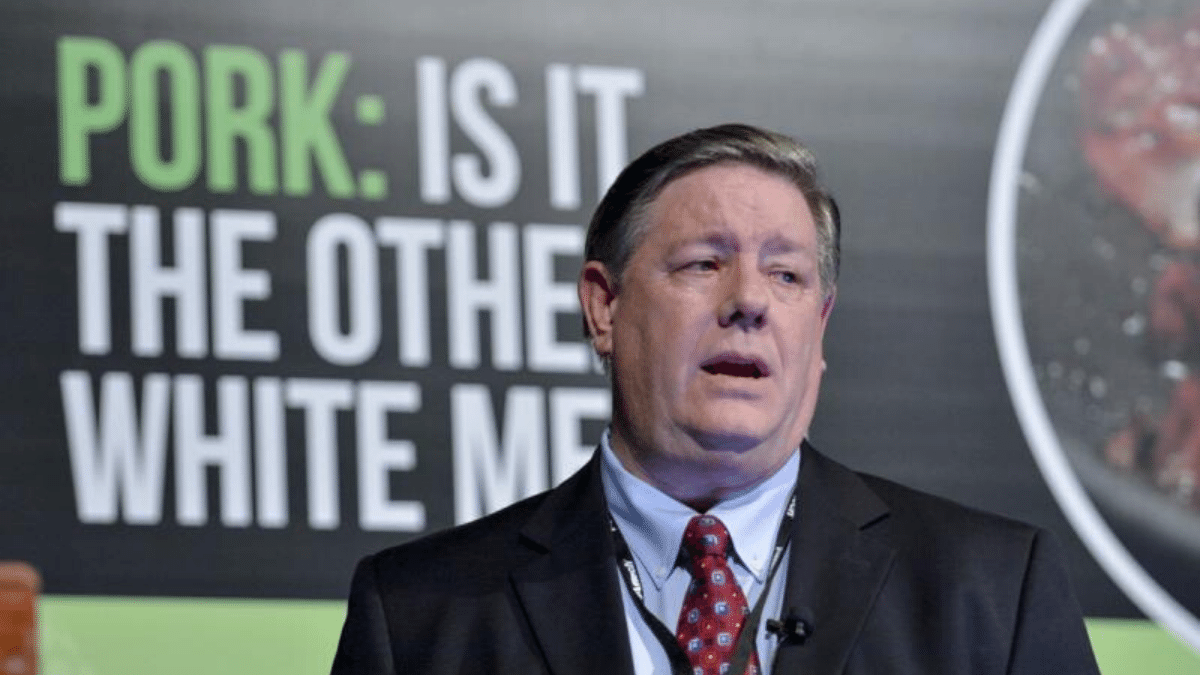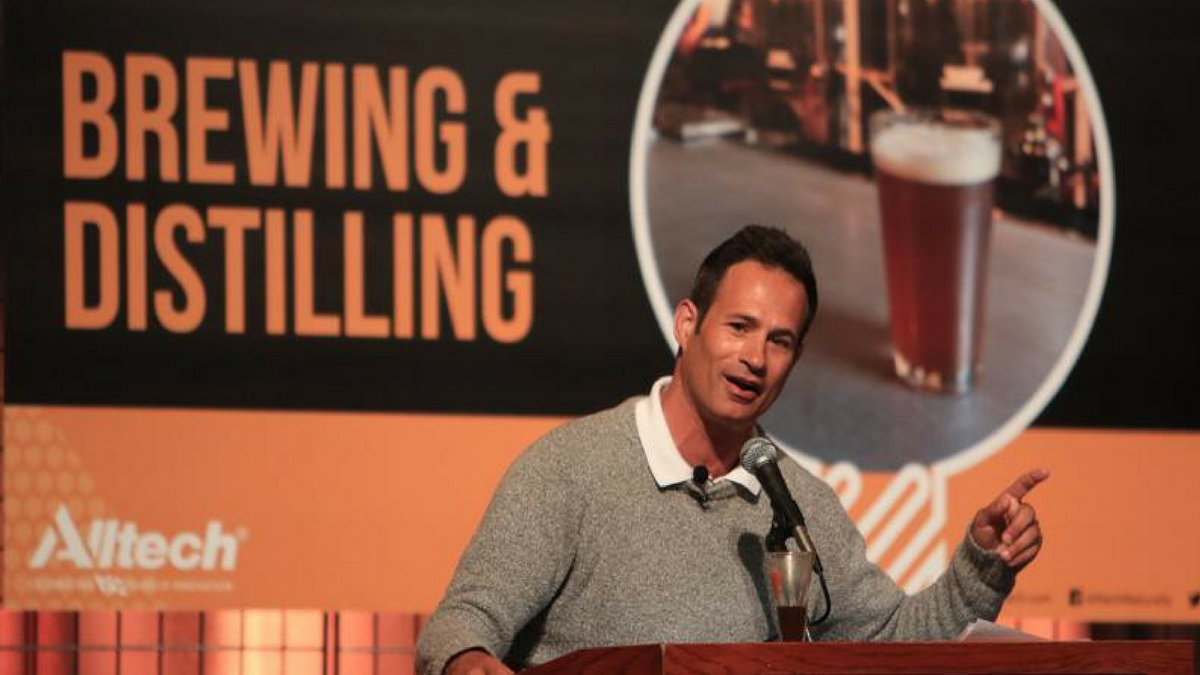Beyond nature and nurture: How genetic interactions are affecting pork profitability
For years, scientists felt that if they were able to map the genome, they would know significantly more about life sciences. However, after successfully mapping both the human genome and several domestic animals’, scientists are left with more questions and the realization that genetic expression is more about the environment than it is the genes themselves.
This study of genes and their interactions is what drove Dean Boyd, technical director for The Hanor Company, to leave the academy and take scholarship to the field. Rebelling against status quo, Boyd strives to provide scientific discoveries based in unbiased, field applied research. At Pork: The other white meat? symposium, during The Alltech REBELation conference in Lexington, Kentucky, USA, he shared some of his findings in regards to genetic expression in pigs and their role in profitability.
When first entering the field, Boyd was taken aback by the high number of researchers functioning on personal biases. These biases lead them to publish skewed or limited findings that were ultimately costing the pork industry significant losses. To rectify the situation, Boyd sought to identify the key performance factors in gene expression and the impact of those expressions on profitability through empirical experiments and large amounts of data.
Gene expression in the field
First and foremost, Boyd found that gene expression is very much modified by the environment, being mainly limited by immune stress and nutrition. However, it’s important to note that viability can only truly be tested under moderate to high immune stress conditions. To adequately analyze a genome, it must be challenged by a variety of field pathogens to understand how the animal is truly programmed. Because of this need for testing under challenging conditions, producers need data from not only the genetic nucleus (which is readily available), but also field data describing how the genes were expressed during challenging conditions (which is less often available).
Even with sufficient data and research, Boyd makes it clear that science will not always get things right, stating that Mother Nature is very complex. However, he clarifies that while all science has potential errors, it is essential to steer clear of ‘isolated science,’ or science that has singular focus. These types of experiments tend to be focused on only one aspect of production, and while they provide impressive figures for proposed outcomes (i.e. litter size), they also typically come with unexpected downsides in other areas (i.e. birth weight and viability). The give and take relationship within pork production can be easily overlooked when only one performance indicator is being tracked. As an example, pigs weaned at 12 days as opposed to 21 days reduced their days to 270lbs by 34 days. However, their mortality rate was also increased by 5.8 percentage points.
Boyd describes the give and take relationship as somewhat of a chain reaction.
- Increased litter size: Decreased birth weight
- Decreased birth weight: Increased mortality rate/reduced viability
- Increased mortality rate/reduced viability: Decreased lifetime full value of sow
To simply focus on litter size neglects other needed components including uterine capacity, the prevention of decline (or ideally an increase) in placenta mucus, milk output, nipple number, and nipple placement. Boyd knew producers needed access to better science.
Five research platforms
In an effort to provide integrated, reliable, and thoughtful research to producers, Boyd has developed a financial analysis worksheet that is based on five research platforms.
- Number of FVP full value pigs (FVP) weaned
- Number of FVP delivered to plant
- Wean to plant viability
- Minimum cull and light sale pigs
- Carcass weight (volume)
- Carcass output/sow + annual + lifetime (cost dilution)
- This accounts for and addresses seasonal infertility, which for many producers is a larger threat to profitability than even disease.
- Weaned pig and W-F cost
- Feed and non feed companies
Through these factors, Boyd and his colleagues have created a benchmarking system with which they are able to analyze pork production units’ profitability, finding that the most differentiating factor, in both profit and loss years, is viability.
While viability is the most significant differentiator; there are many key profit drivers to consider including pig numbers to market, pig livability, heavy carcass weight, and production costs. At first glance, one might assume production costs most strongly influenced profits, but in fact, pig numbers to market does.
Conclusion
In addition to managing these key profit drivers, Boyd explained, it is essential to have integrated team functions. Veterinarians, nutritionists, and those in production need to have an open dialogue where they can actively and effectively work together. One of the largest challenges the industry is facing is a recent shift in consumer culture. Previously, science has been an influential driver in consumer decisions. However, due to some strategic moves and changes in technology, marketing has positioned itself as a more influential voice in consumers’ lives. A great example of this is the antibiotic free (ABF) debate. Regardless of what science may suggest (i.e. antibiotic free vs. antibiotic residue free), consumers are demanding ABF products, so producers must be prepared to deliver them. An integrated team is the best way to ensure pork producers are prepared to address these changing consumer demands.
All in all, it is important for producers to recognize that mapping the genes of pigs is one small step towards fully understanding those genes’ interactions with the environment around them. To potentially improve profitability, it is essential to acknowledge the interactions between all the various factors of production, focusing on the key profit drivers and working closely with an integrated team.
I want to learn more about nutrition for my pig herd.
- Read more about Beyond nature and nurture: How genetic interactions are affecting pork profitability
- Log in to post comments

<script charset="utf-8" type="text/javascript" src="//js.hsforms.net/forms/v2-legacy.js"></script>
<![endif]--><script charset="utf-8" type="text/javascript" src="//js.hsforms.net/forms/v2.js"></script><script>
hbspt.forms.create({
portalId: "745395",
formId: "60231863-171f-40d3-8aab-9c79cd363ae2"
});
</script>
Even with sufficient data and research, Boyd makes it clear that science will not always get things right, stating that Mother Nature is very complex.



















